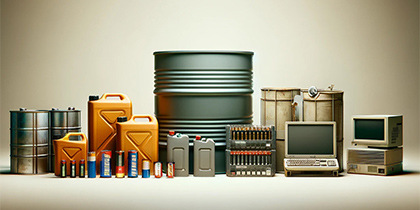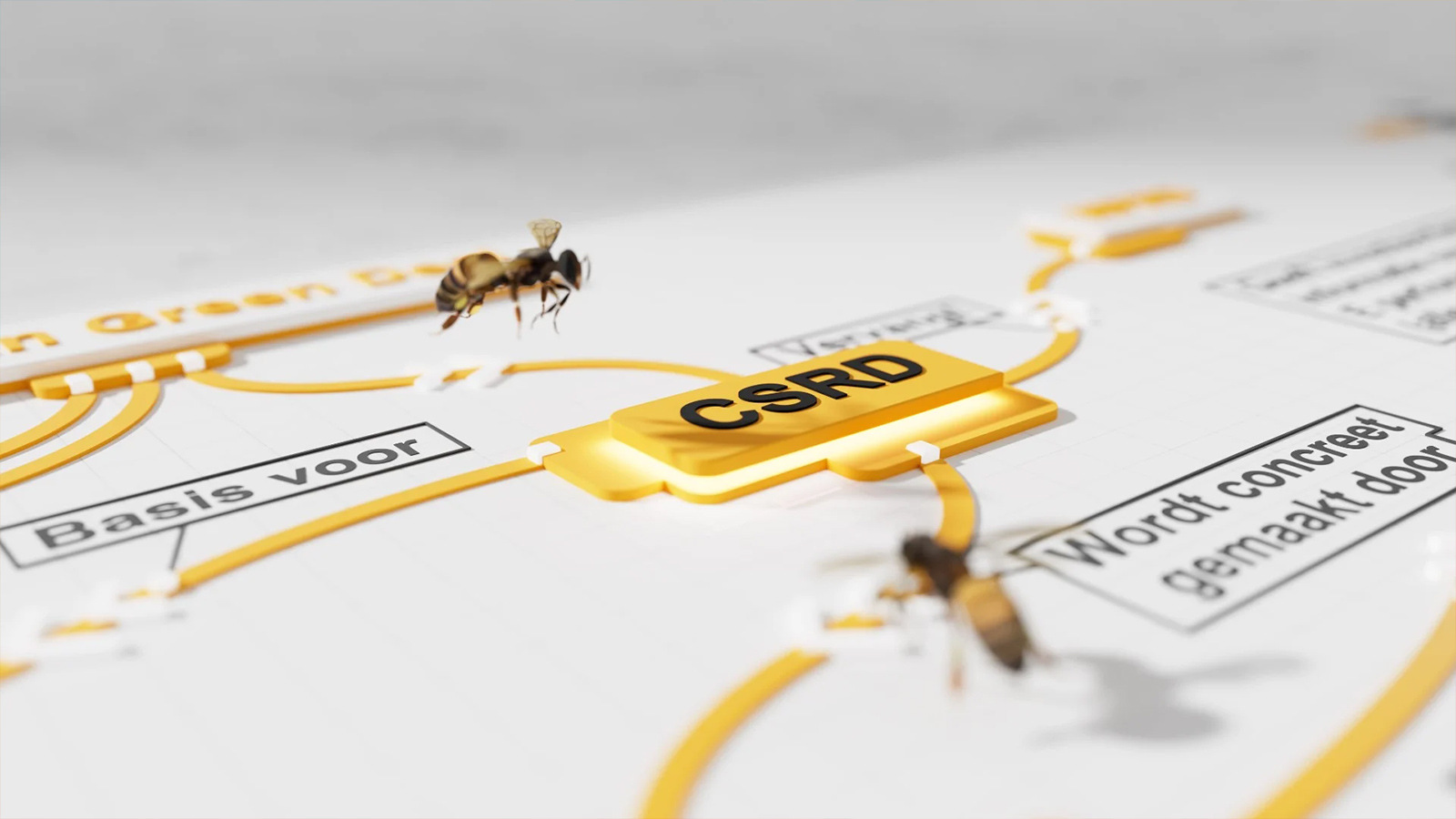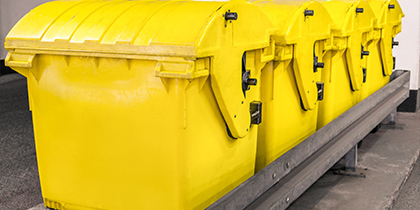Suppose you have a large quantity of used batteries or accumulators that need to be processed. Did you know that they have a specific EURAL code attached to them? These codes ensure that waste streams in Europe are recognized, transported and processed in the same way.
In this blog you will read how this code is determined, why it is important and how it helps to comply with laws and regulations such as the CSRD and the waste register.
What is EURAL?
EURAL is the European list of waste, designed to classify waste streams in the same way in all EU countries. This way everyone - from producer to processor - knows exactly what type of waste it is, and what rules apply to storage, treatment and mandatory waste reporting, such as the CSRD and waste register.
Each waste stream is given a fixed six-digit code. That code provides information on the origin and composition of the waste - and whether it is hazardous waste, such as paint waste, batteries or chemical packaging (identified by the asterisk), or non-hazardous waste such as plastic and wood.
Who uses the EURAL and what for?
Companies that produce, process or transport waste are required to classify their waste streams correctly according to applicable laws and regulations. This includes:
Waste disposers: When disposing of waste, waste disposers must identify the type of waste based on its composition. They then associate the waste stream with the appropriate EURAL code so that the waste can be transported and processed safely and in accordance with laws and regulations.
Waste processors: Although waste processors receive the EURAL code from the waste discarder, they must always verify it themselves. They determine which waste is involved, based on compositions ensure proper registration.
Municipalities and provinces: They ensure that the distinction between hazardous and non-hazardous waste is properly applied and complied with. In doing so, they also verify that the correct EURAL codes are used. Thus, they oversee the safe and proper handling of waste.
What are the 800 waste streams in the EURAL list?
The EURAL list contains about 800 different waste streams. The first two digits of the six-digit code refer to the sector, for example, construction, chemical or food industry. The four digits after them indicate a specific type of waste, such as plastic and paper.
Examples of EURAL codes:
08 01 11* Paint and varnish waste containing solvents (hazardous waste).
15 01 01 Paper and cardboard packaging (non-hazardous)
20 03 01 Mixed industrial waste, such as residual waste from offices (non-hazardous)
Why is EURAL important?
Transporters are not allowed to drive without an approved transport document. This document, the so-called CMR document, indicates which waste is being transported, including the correct EURAL codes. This makes it immediately clear which waste streams are involved and whether the transport is in accordance with the applicable rules.
In addition, the EURAL list is an important tool in legislation and regulations concerning waste streams. Below you can read why.
CSRD: reporting on waste streams
The CSRD requires companies to report on their waste streams. That means: providing insight into what types of waste are released, quantities per stream, whether it is hazardous or non-hazardous waste and how the waste is processed.
The EURAL list is an important tool to record this in a clear and structured way. Each waste stream is given a fixed six-digit code, which provides information on the type of waste, origin and whether it is hazardous.
By using those codes in your reporting, it becomes immediately visible: what type of waste was disposed of, how much waste was released, whether it should be registered as hazardous waste and what processing method was used.
Waste register: administrative obligations and control
The EURAL list is also an important tool in Belgium. The waste register, mandatory since January 2024, mandatory since January 2024, requires companies to digitally record which waste streams are generated, to which processor or location the waste ends up and how it is processed. Again, the EURAL list ensures that this recording is done in a clear and structured manner.
The Milgro Dashboard and EURAL
In the Milgro Dashboard, you will find detailed reports that provide insight into costs, processing, transport and environmental impact. These reports help comply with legislation such as the CSRD and the Waste Register. In addition, the platform offers extensive reports to monitor and actively manage CO2 emissions within scope 3.
The dashboard provides insight into which waste streams are hazardous, with breakdowns per stream, weight and location. The EURAL codes are also linked so that waste streams are clearly and correctly classified.
Frequently asked questions about the EURAL list
Some waste streams in the EURAL list have two codes: one as hazardous waste (marked with an asterisk) and one as non-hazardous waste. These are called mirror codes. In such cases, it is important to look at the composition of the waste.
Does the waste contain hazardous substances, such as solvents or oil? Then the hazardous code applies. If not, you use the non-hazardous code.
Example:
An empty paint can may look like metal waste. But if it still contains paint residues, it is classified as hazardous waste.
The EURAL list is freely available through official government websites. Hereyou can find the official link to the EURAL list.
Stay informed
Want to stay up to date with the latest developments? Follow us on LinkedIn and Instagram or subscribe to our newsletter. Curious about what Milgro can do for your operations and waste process? Feel free to get in touch .















